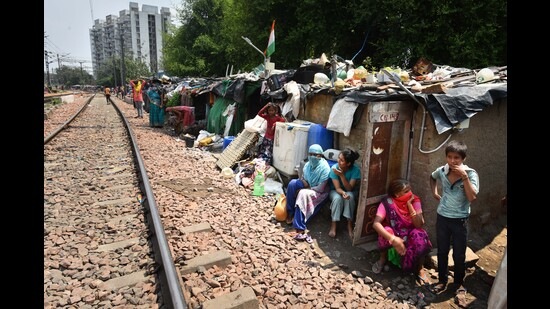Focus on the base of the pyramid
There are many Indias encapsulated in India. However, just in terms of per capita, there are three. While businesses will focus on the top two, the State must empower the last tier by providing water, health care, school education, and skills training
Cambridge economist Joan Robinson once remarked: “Whatever you can say rightly about India, the opposite is also true.” To this day, the dictum has explanatory power. One of the difficult things to explain, especially to foreign CEOs building their company’s presence in the country, is that many Indias are encapsulated in India. There are many cuts to India — the 28 states, 22 official languages; urban and rural; the different communities, castes, and religions; and the salaried and self-employed workers. However, the most critical India they need to fundamentally grapple with is one spanning different development stages. An India that spans and demonstrates the characteristics of the most developed to the poorest parts of the world.

Just in terms of per capita, there are three Indias. If we go by purchasing power parity (PPP) estimates for per capita in India, there is a Europe of about 50 million people with a per capita of $45,000 per annum; an Indonesia of 425 million people (double the size of Indonesia) with a per capita of $9,500 per annum; and a sub-Saharan Africa of over 900 million people with a per capita of $3,300 per annum, including about 300 million people, whose income levels rank even below sub-Saharan Africa. The first two Indias are good enough for business. It’s a consuming India, growing rapidly with increasing aspirations.
The challenge for policymakers and the government is to address the opportunities for the India that business does not care about. This India has aspirations that are not being met. As the consuming power of the top two Indias grows, businesses worldwide focus on them and cater to their needs. These segments are powering the Indian economy, already the world’s third largest in PPP terms. Yet, India cannot achieve its potential, or ever be called a developed country, without improving the lot of those living at sub-Saharan levels. What is worse is that the growth rates in the income of the top two segments are faster than the bottom, so by 2030, India’s Europe and Indonesia will account for over 70% of the total consumption spending. In 2030, there will remain 200 million people living below sub-Saharan Africa levels.
All of India must care about this dynamic. We are a thriving democracy where such growing inequality will cause major social tensions and fundamental instability. As the Europe and Indonesia in India grow, products and services will target them, akin to the dynamic that one can witness in the research budgets of the global pharmaceutical industry. Basic ailments will continue to affect poor parts of the world due to neglect, while the needs of the rich get attention because of their economic clout.
Technology does offer hope for all, but the way things are in India, technology adoption in the sub-Saharan part of India is low, smartphone penetration poor, connectivity spotty, and there is an increase in digital apartheid. This is evident in the fall in children’s learning outcomes in the sub-Saharan segment during Covid-19.
One of the flaws in our development model compared to China, another large population country of continental size, has been our neglect of water. After the initial investments in irrigation and dams in the early years after Independence, there has been salutary neglect of water between say 1970-2010. Due to this, agricultural incomes have not grown. The need to improve productivity in agriculture is critical. After a spurt during the Green Revolution, agricultural growth slowed to around 3.5% in the 1990s and 2000s. India’s rice yields are a third of China’s and are about half that of Indonesia. The same is true of other agricultural commodities.
India’s sub-Saharan Africa requires water for irrigation and continuing innovation and research in seeds and fertilisers to help farmers improve their yields. One of the sad political realities of our democracy has been the supply of free water and power to agriculture. This has distorted incentives and has led to large transmission losses in power generation and poor power supply. Indiscriminate use of free water and power has led to steep falls in the water table. Improper cropping patterns in growing crops that use a lot of water in areas lacking water have further compounded this problem. One of the critical sustainability goals India should focus on is providing water security, especially for improving agricultural productivity and cities to facilitate migration from rural to urban areas.
In the coming decade, government expenditures and schemes should aim to lift India’s sub-Saharan Africa into the Indonesian segment. To be fair, the government has initiated many schemes for the poor. However, it must also continue strengthening delivery, using technological tools to ensure that the schemes reach their intended beneficiaries.
In addition to providing the living basics to the needy through subsidies, we need to, as the saying goes, “teach them how to fish” rather than provide the fish. Welfare schemes are important, but empowering this segment by fixing water, providing primary health care and nutrition, school education, and skilling, will be required to sustain the country in the long run. What a great India it will be if, in its 100th year of Independence, we can’t find any Indian inhabiting sub-Saharan Africa in India.
Janmejaya Sinha is chairman, BCG India
The views expressed are personal
All Access.
One Subscription.
Get 360° coverage—from daily headlines
to 100 year archives.



HT App & Website







